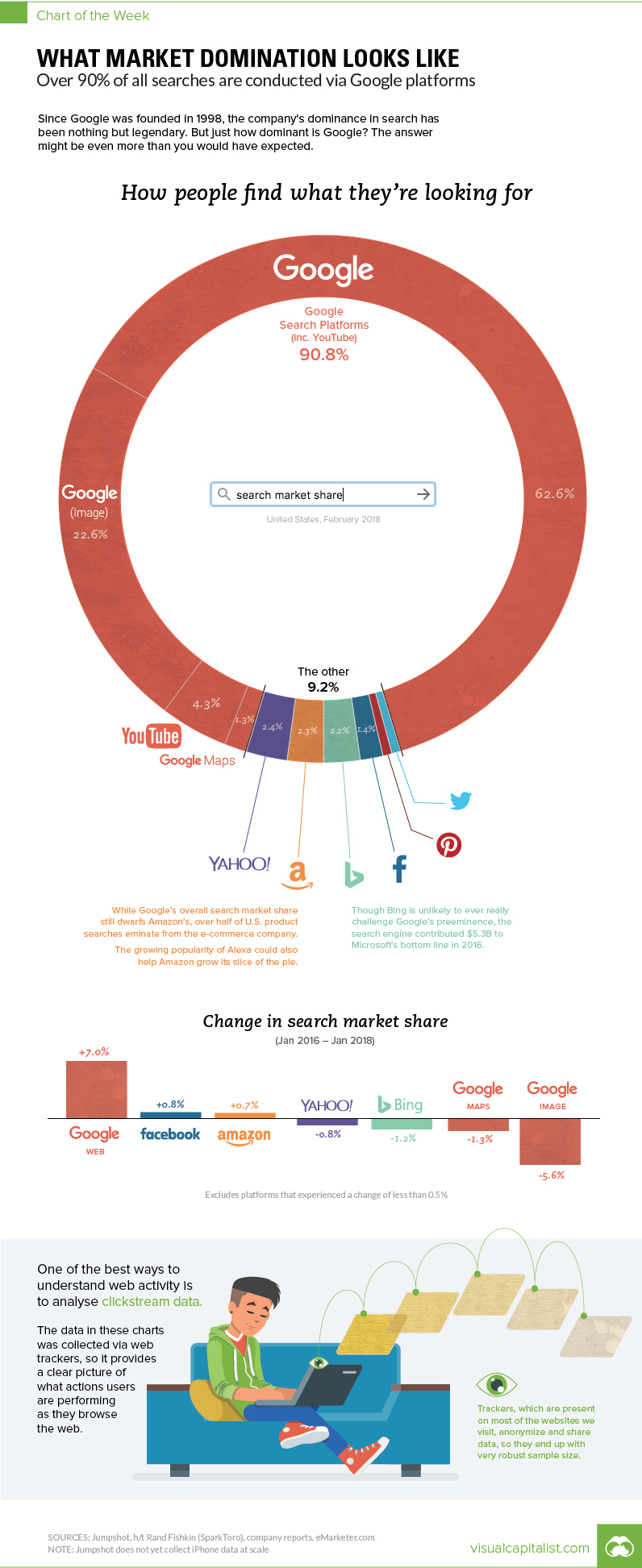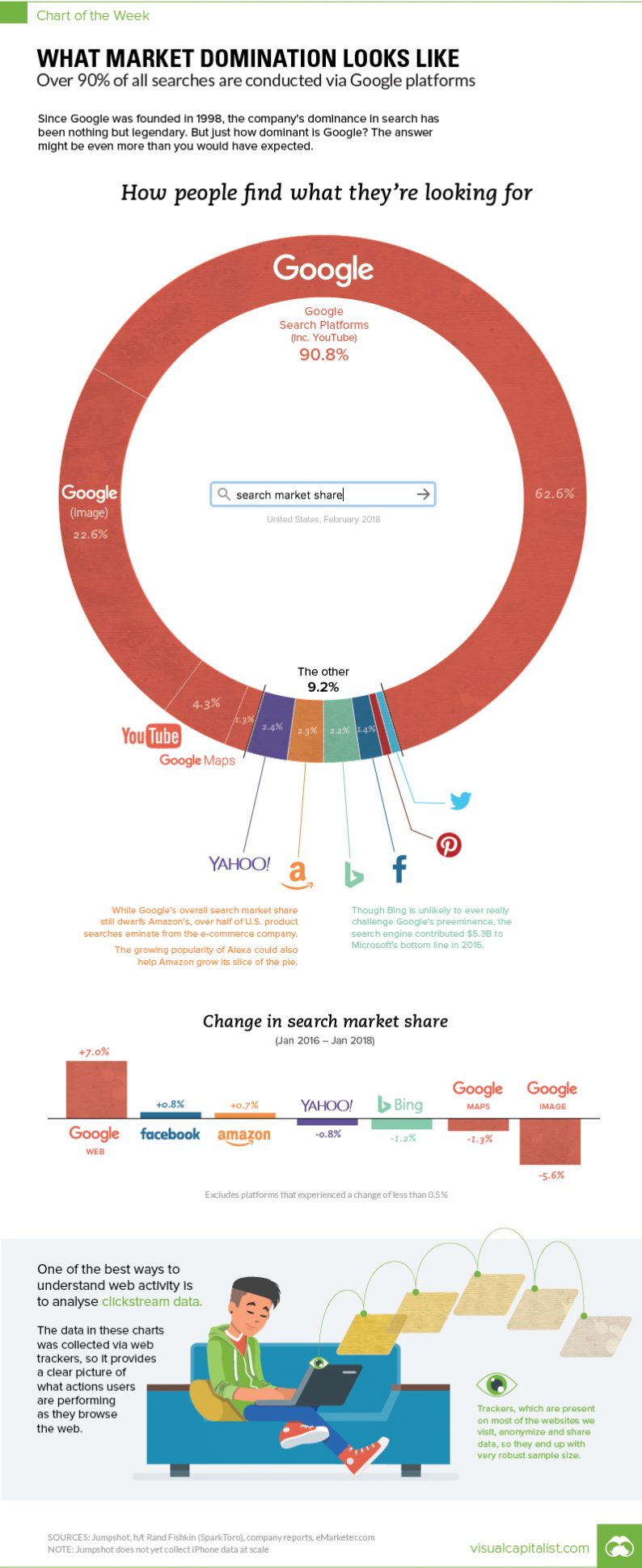The Chart of the Week is a weekly Visual Capitalist feature on Fridays.
Yes, we all know that Google is dominant in the realm of search.
But at the same time, the internet is also a huge place – and building a decent searching algorithm can’t be that hard, right?
This week’s chart is a bit mind-boggling, because it makes the case that Google is even more dominant than you may have guessed. Between all Google features and the search giant’s YouTube subsidiary, more than 90% of all internet searches are taking place through the company.

THE HARD DATA
According to Jumpshot (via SparkToro), a marketing analytics firm that licenses anonymous ClickStream data from hundreds of millions of users, about 62.6% of all searches online are through Google’s core function.
But that’s just the beginning, as that number doesn’t include other Google functions like image search or Google Maps, or properties such as YouTube:
Together, Google holds onto an impressive 90.8% market share of web, mobile, and in-app searches – though it should be noted that the above source does not include iPhone data at scale yet.
THE GOOGLE-OPOLY
How does Google keep up such a massive market share, and why can’t a real competitor in search emerge?
The answer has to do with platforms and apps. Google’s strategy is to go where the users are, and to ensure that wherever they go, a Google search is not hard to do.
Over a decade ago, this meant being the home page on every internet browser – but more recently, it’s taken the form of internet browser market share (Chrome), mobile OS market share (Android), owning the dominant video platform (YouTube), and even venturing into your dwelling with Google Home.














Leave A Comment